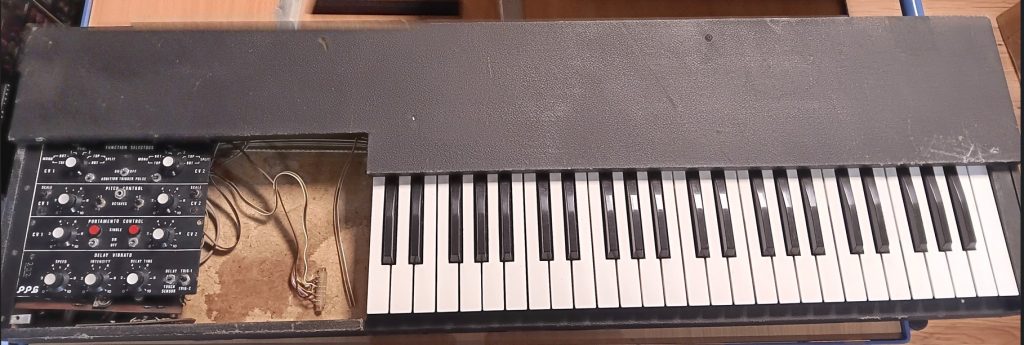The PPG digital keyboards were a completely new approach in controlling analog modular synthesizers. While most other manufacturers(*) used resistor strings, sample&hold circuits and eventually means of analog computation to achieve polyphony, Wolfgang Palm of PPG went the digital way. This allows for completely new voice assignment schemes and complete pitch stability after a key is released.
The references I found vary a bit in functionality. A Duophonic Keyboard 322 I found on the web for example has one switch setting for monophony, duophony, split mode and a button-activated memory mode, which is also described in the “INFO MAPPE SYNTHESIZER MODUL SYSTEM 300er SERIE” from December 1976. Also in this publication there’s a photo of a multicontrol keyboard similar to the one described in this post.
It came to me in parts, with lots of the internal wiring cut and rewired for some unknown purpose. The goal is to restore full original function, while adding the previously removed internal power supply, and to reverse engineer all of its circuitry to create some documentation also for its usage from this.
(*) Oberheim used a digitally scanned keyboard around the same time in the FVS, but there are probably not many more examples.
Before I start over with individual posts showing the functional units of the keyboard, here is a first impression of how it came to me and how important a careful disassembly, documentation and restoration will be.





